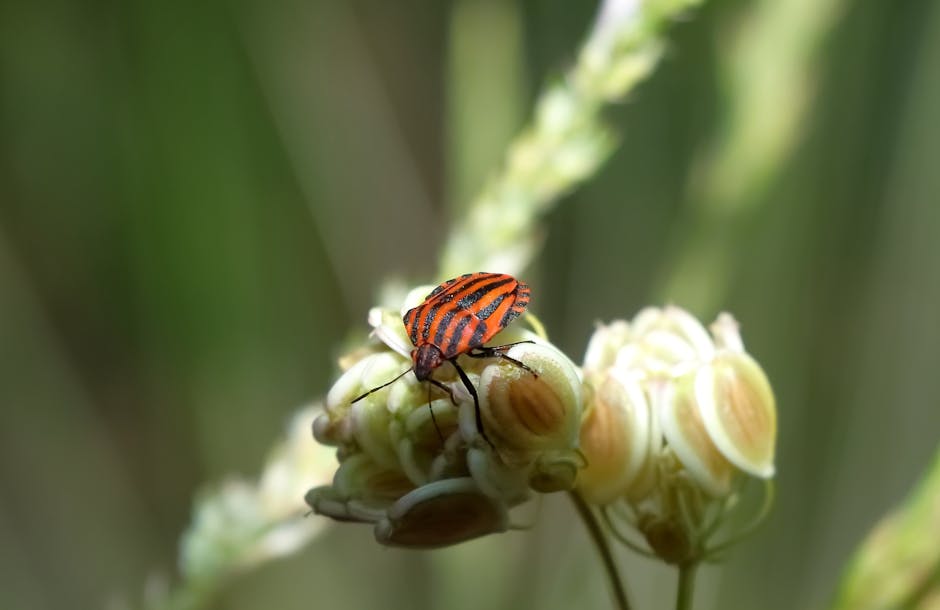Table of Contents
Pests, they’re just a fact of life, aren’t they? Whether you’re dealing with tiny ants marching across the kitchen counter or something much bigger chewing on your garden plants, these unwanted guests really make life a nuisance. And in 2025, it’s still the same old story, but how we deal with them, that’s where things have really changed. We’re smarter now, or at least we’re trying to be.
For years, many of us just grabbed the strongest spray bottle we could find. You’d see a bug, you’d zap it. That was the game plan for almost everyone. But then we started noticing things; the sprays didn’t always work, or they hurt other things, things we actually wanted around. So, that quick fix, it began to look less like a solution and more like a problem itself.
Think about it; putting down chemicals everywhere, that just doesn’t feel right anymore, does it? People are much more aware these days of what’s in their homes and what’s touching their food. It’s not just about getting rid of the pests; it’s about doing it without causing a whole new set of troubles for ourselves or for the planet. That shift, it’s big.
We’ve learned a lot about insects and critters over time. They adapt. They get tough. What wiped them out last year might not even make them flinch this year. So, the old-fashioned, blanket approach, it truly just doesn’t cut it. It becomes a treadmill, always fighting, never winning for good. It needed a real rethink.
So, what are folks doing differently now? It’s not one magic bullet, that’s for sure. It’s more like a puzzle, putting different pieces together to create a stronger defense. It’s about understanding the pests, what they like, what they hate, and then hitting them where it counts, but smartly. That’s the real trick.
Understanding the Enemy: Getting Smart About Pests
You can’t really beat something if you don’t even know what it is or how it acts. That’s the starting point for any good pest control plan these days. Just seeing a bug isn’t enough; you need to figure out which bug it is. Is it eating your tomatoes, or is it just passing through? Different pests need different answers.
People are spending more time watching and learning. They’re looking for signs of pest activity, not just the pests themselves. Maybe it’s tiny droppings, or chewed leaves, or even strange noises in the walls. Knowing what’s up helps you pick the right defense, so you don’t just guess and hope for the best.
What I often tell people is, think like a detective. Look for clues. Where are they coming from? What are they attracted to? Is it food crumbs, standing water, or just a cozy corner? Once you know their habits, you can start to mess with them, making your place less appealing. It’s like changing the locks on your home.
Stopping Them Before They Start: Exclusion and Sanitation
This one sounds pretty basic, but it’s honestly one of the strongest defenses you’ve got. If a bug can’t get in, it can’t be a pest. It’s simple common sense. So, checking your house for tiny cracks, holes, or even gaps under doors, it’s not just for drafts; it’s for keeping out unwanted visitors.
A little caulk here, some steel wool there, and maybe a sweep under the garage door. These small fixes add up big time. They make your home a fortress against everything from mice trying to squeeze through a tiny gap to ants finding a highway under your front door. It truly makes a difference.
Keep it Clean, Keep it Empty
And then there’s the cleaning part. You’d be surprised what a difference a truly clean space makes. Pests are looking for food, water, and shelter. If your kitchen counters are sparkling and there aren’t crumbs all over the floor, you’re taking away their dinner invitation. It sounds obvious, but it works.
Don’t leave pet food out overnight. Put trash in tightly sealed bins, inside and outside. Fix leaky faucets right away, because standing water is a welcome mat for some pests. These steps, they might not seem like much on their own, but together, they make your home a very uninviting place for most critters.
Natural Allies: Using Biology to Battle Bugs
This is where things get really interesting and, in my opinion, very clever. Why spray everything when you can get nature to do some of the work for you? There are plenty of bugs out there that eat other bugs. It’s like having a tiny, hungry army on your side, and they don’t charge anything.
Think ladybugs eating aphids, or tiny wasps that target specific pest eggs. Gardeners have been using this stuff for ages, but it’s getting more traction in other spots too. It takes a bit of planning, choosing the right friendly bugs for the specific bad ones you have, but it can work wonders.
It’s not just about introducing new insects, either. It’s also about making your garden or yard a welcoming place for the ones already living there. Provide them with the right plants, some water, and a safe spot to hang out. If you build it, they will come, and they’ll get to work for you.
Changing the Environment: Cultural Controls
Sometimes, the simplest changes to how we do things can make the biggest difference. This is all about cultural control, which means altering the environment to make it less appealing to pests. It’s not just about killing them; it’s about making them leave on their own.
For instance, in a garden, rotating your crops helps. If you plant tomatoes in the same spot every year, specific tomato pests build up. Move them around, and those pests have a harder time finding their dinner. It breaks their cycle; they just can’t keep up.
Another good one is proper watering. Overwatering can lead to damp conditions that some pests just love. Watering smartly, only when needed, and at the right time of day, can dry out their preferred living spaces. These small changes, they truly mess with a pest’s plans.
Smart Tools for Smart Pest Control
Technology has pushed into just about every part of our lives, and pest management is no different. We’re seeing more gadgets and smarter ways to track and deal with pests without heavy chemical use. It’s not science fiction anymore; it’s here, and it’s pretty useful.
Motion-activated traps, for example. Or even cameras that can identify specific insects and alert you. Some systems even use thermal imaging to find nests behind walls. These tools, they give you an edge, helping you pinpoint problems before they get totally out of hand.
Digital Eyes on the Problem
There are even apps now that help you identify pests from a photo. You snap a picture, the app tells you what it is, and then gives you some ideas on how to manage it. This kind of access to knowledge, it truly helps people feel more in control of their own pest situations.
What’s coming next? Who knows? Maybe tiny robots that patrol your garden. The point is, these tools help us be more precise. We don’t just hit everything with a hammer; we use a scalpel when needed. It saves time, money, and can be much safer overall.
Targeted Chemical Use: When Nothing Else Works
Sometimes, you do need chemicals. Let’s be honest, some pest problems are just too big or too stubborn for other methods alone. But the way we use them has to be different now. It’s not about spraying everything down; it’s about being very specific.
This means using chemicals that target only the pest you have, not everything else. It means putting them only where the pests are, in bait stations or cracks, not all over your floors or plants. Less is often more with this stuff, and precision matters a lot.
A Last Resort, Not a First Option
And when you do use them, safety comes first. Read the labels. Follow the directions exactly. Wear gloves. It’s not rocket science, but people sometimes get sloppy. My advice? If you’re not sure, call in a pro who knows what they’re doing. It’s just safer for everyone.
The idea here is that chemicals are a tool in the toolbox, but they’re not the only tool. They’re there for when other methods haven’t worked or when the situation calls for immediate, aggressive action. They shouldn’t be your go-to for every little problem.
Ultimately, managing pests in 2025 is about being smart and flexible. It’s about not giving up, but not getting frustrated either. You learn; you adapt. Sometimes it’s about a little bit of everything: good cleaning, some traps, maybe a friendly bug, and if you have to, a very careful chemical application. It’s truly about trying to keep balance.
How do I figure out what kind of pest I have: Look for unique signs; check droppings or damage patterns; search online using descriptions of the pest; take a picture and use an identification app?
You’ve got to be a detective; notice where they’re hiding; see what they’re eating. A good pest control pro can often identify what’s going on pretty quickly. Don’t just guess; knowing your foe helps pick the right fight. It saves a lot of wasted effort.
Can I really use bugs to get rid of other bugs: Yes, it works well for some garden pests; you buy beneficial insects online or at garden stores; you need to make sure the conditions are right for them; they don’t work for every type of pest problem?
Absolutely, it’s called biological control, and it’s been around forever. Ladybugs eat aphids; tiny wasps attack caterpillars. It’s a natural process, and it works great in gardens. You just have to pick the right bug for the right job, and give them a good place to live.
What if I only have a few pests, do I still need to do all this: Even a few can turn into many fast; addressing small issues prevents big ones; using simple steps early is always better; you can often avoid chemicals this way?
Well, a few pests can turn into a lot of pests pretty fast, can’t they? So, catching it early, even when it’s just a couple of bugs, is smart. Simple things, like cleaning up spills or sealing a small crack, can stop a big problem before it even starts.
Are electronic pest repellents any good: Some claim to work, but many people don’t see results; check reviews carefully before buying; they usually aren’t a standalone solution; traditional methods are often more dependable?
Honestly, many of those electronic gadgets that claim to scare away pests with sound waves, they often don’t do much. While some people swear by them, a lot of folks find they’re not effective. It’s probably better to stick with proven, hands-on methods first.
Is it safe to use traps in my home if I have kids or pets: Yes, if you pick the right kind; look for child and pet-safe options; place traps where kids and pets can’t reach them; read all the instructions carefully?
Yes, you can certainly use traps safely. Just make sure to choose traps designed to be safe around children and pets. Place them in spots where tiny hands or curious noses can’t get to them. High shelves or inside cabinets often work well. Always read the safety warnings on the package first.
Key Takeaways:
Pest management now focuses on smart, precise methods, moving away from widespread chemical use.
Understanding the specific pest and its habits is the first, most important step.
Preventing entry and keeping clean spaces are powerful, non-chemical defenses.
Using natural predators or making the environment less friendly to pests offers long-term control.
Modern tools and technology help with early detection and targeted treatments.
Chemicals are still a tool, but they should be used as a last resort, very carefully, and with high precision.












